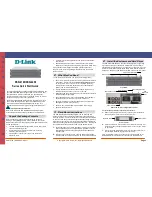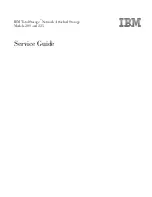
DL4300 Appliance
Removing replication
313
Setting replication priority for a protected machine
Replication priority determines which replication jobs are sent to the Core first. Prioritization is set ordinally, on
a scale of 1 to 10, where a priority of 1 is the first priority, and a priority of 10 is the last priority. When you first
establish replication for any machine, its priority is set to 5. You can view and change priority at the protected
machine level from the source Core.
In some cases, it is possible that some replication jobs are abandoned. For example, replication jobs can be
abandoned if your environment is experiencing unusually high change rates or if your network does not have
enough bandwidth. This situation is particularly likely if you set schedules which limit the hours when replication
occurs in your environment. For more information about setting schedules replication, see
.
To ensure replication occurs for important machines first, set critical servers to a priority with a lower number
(between 1 and 5). Set priority for less important machines to a higher number (between 6 and 10).
Setting replication priority to 4 for any protected machine assures its replication job is started before a machine
with the default replication priority of 5. Replication jobs for machines with a priority of 3 are queued before 4, and
so on. The lower the priority number, the sooner its replication jobs are sent. It is easy to remember that priority 1
is most important. Machines with a replication priority of 1 are the first machines queued for replication.
Complete the steps below to edit the settings that prioritize when a protected machine replicates.
1. On the source Core, open the Rapid Recovery Core Console, and from the icon bar, click (Replication).
The Replication page appears.
2. In the Outgoing Replication pane, click the arrow to the right of any source Core.
The view expands to show each of the protected machines from this source Core that are being replicated
to the designated target Core.
3. Click the (Settings) drop-down menu for the protected machine you want to prioritize, and then click
Settings.
A dialog box appears.
4. Click the Priority drop-down list and select a priority, from 1 (Highest) to 10 (Lowest), based on your
requirements.
5. Click Save.
The dialog box closes, and the replication priority for the selected machine updates.
Parent topic
Removing replication
Replication is the intentional duplication of recovery points for a protected machine from one Rapid Recovery
Core (the source Core) to a second Core (the target).
The goal of replication is to maintain a high-availability duplicate of data for the original protected machine. For
optimum data security, Dell recommends locating the target Core at a separate geographic location.
Unless you change the default behavior by setting a replication schedule, the Core starts a replication job
immediately after completion of every backup snapshot, checksum check, attachability check, and the nightly
jobs. For more information, see
.
When you remove replication, you discontinue further copying of recovery points from the source to the target
Core. Removing replication never affects the data saved on the original (source) Core.
Also, when you remove replication, you have the option of leaving the replicated recovery points from the original
machine on your target Core, or deleting them. If you retain the recovery points for a replicated machine that you
remove, the recovery points for that machine are then represented in the Core as a recovery points-only machine.
















































